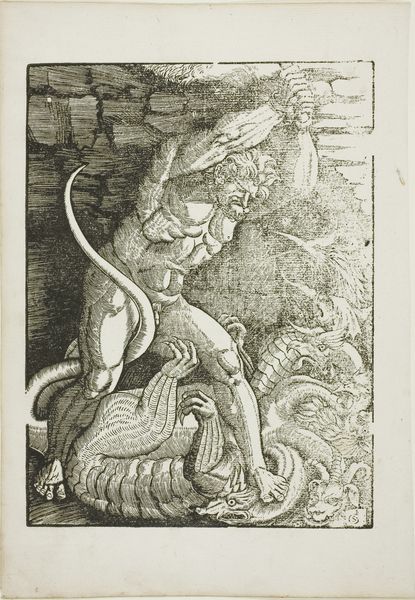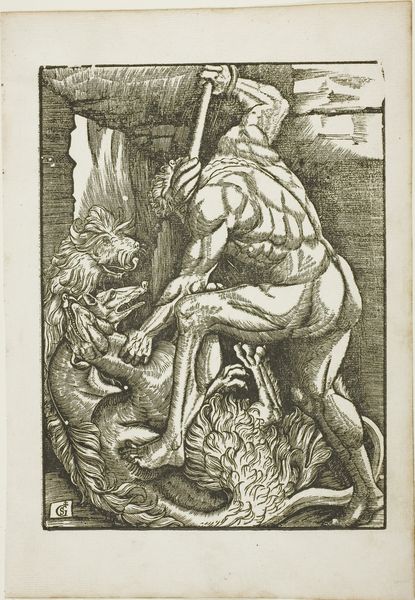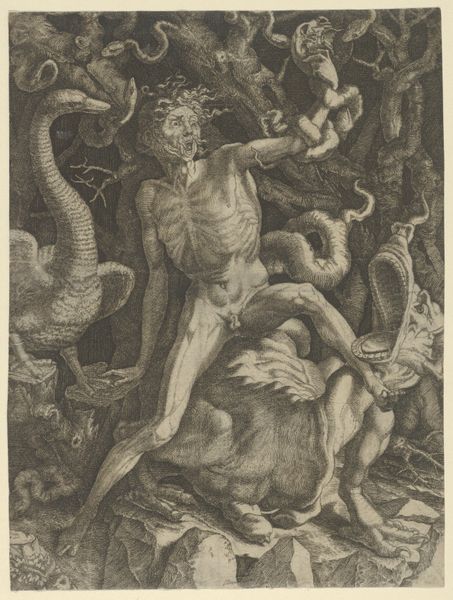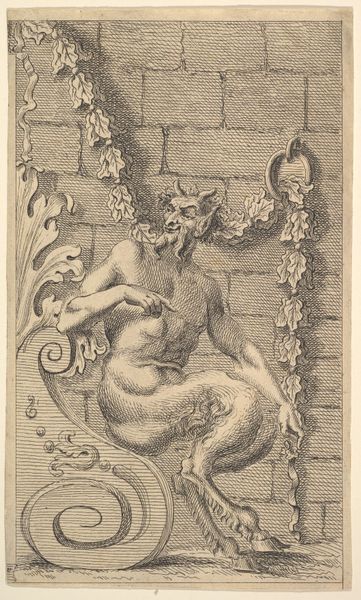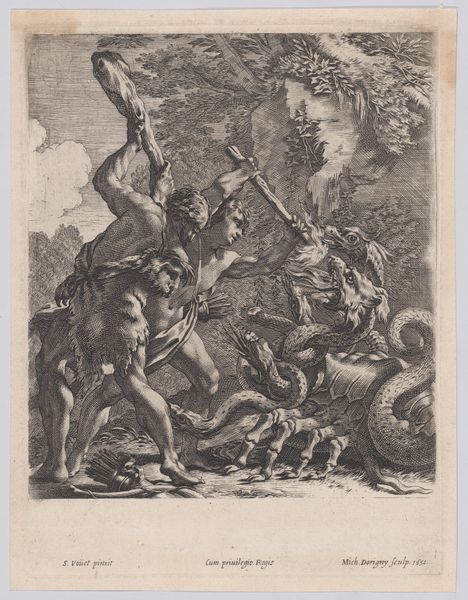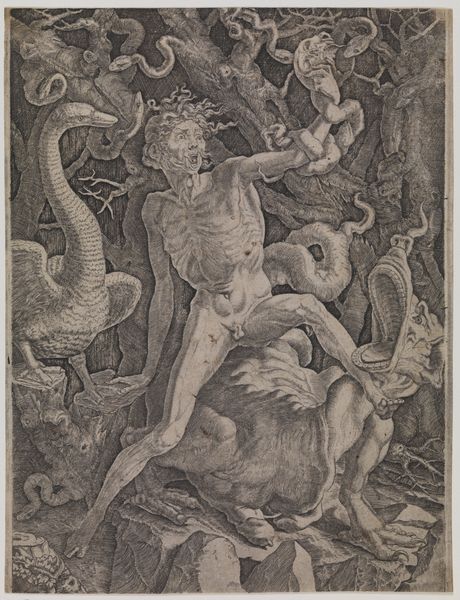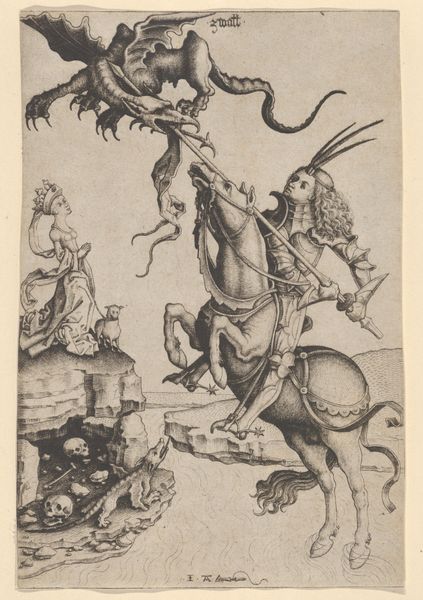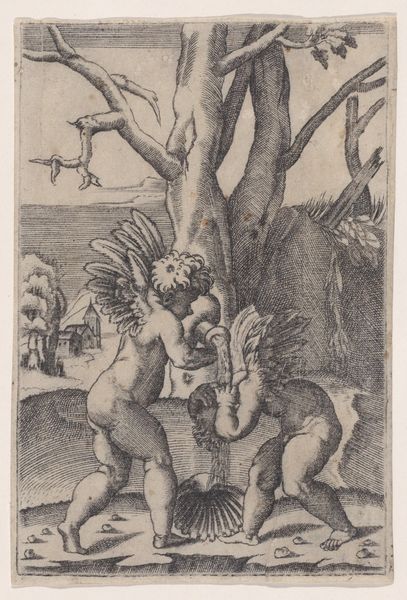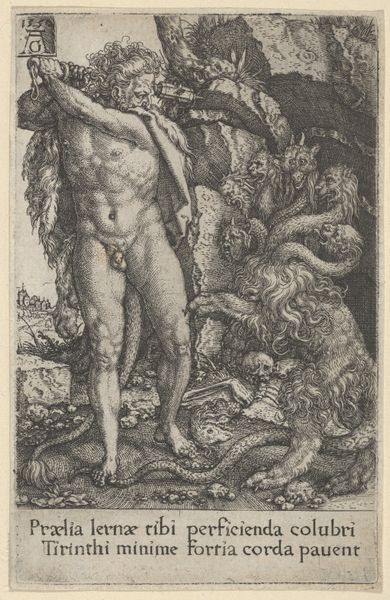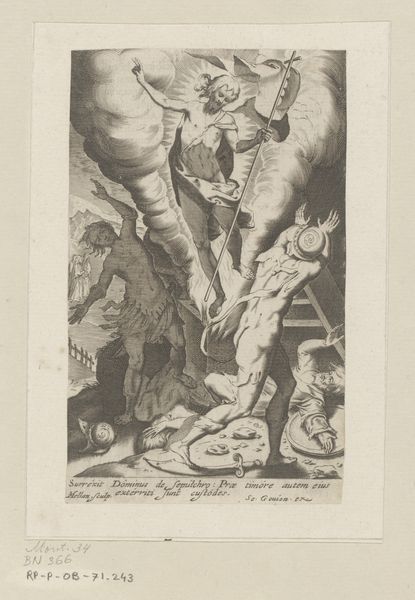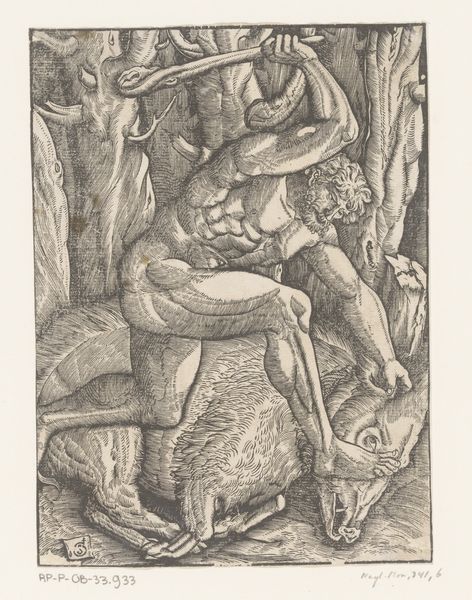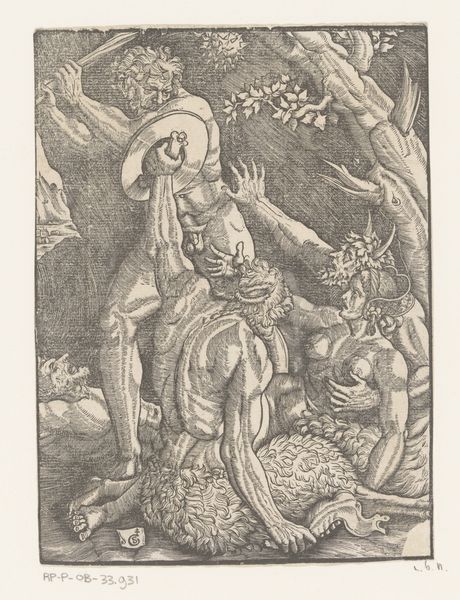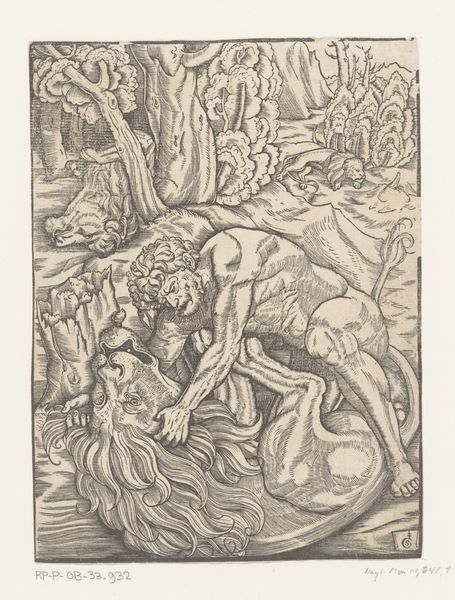
drawing, ink, engraving
#
drawing
#
pen illustration
#
pen sketch
#
figuration
#
11_renaissance
#
ink
#
pen-ink sketch
#
line
#
history-painting
#
engraving
Dimensions: height 196 mm, width 146 mm
Copyright: Rijks Museum: Open Domain
Editor: So, here we have “Hercules Slaying the Lerna Hydra” from around 1528, created in ink. I’m struck by the tension; Hercules looks so strained, almost overwhelmed by the many-headed beast. What do you see in this piece? Curator: I see a potent allegory for the ever-present struggle against oppression. Consider the context: this image circulates during the Renaissance, a period grappling with seismic shifts in power and knowledge. Hercules, here, becomes a symbol. Editor: Symbol of what exactly? Is it about physical strength? Curator: Not simply physical. Hercules embodies the intellectual and moral strength needed to combat the Hydra – representing ignorance, corruption, societal ills. The Hydra's heads multiply when attacked, symbolizing the resilience of oppressive systems. Think about the colonial era or, even today, climate denialism; whenever facts are thrown at such things, they somehow come back even more insistent. Does that register with you here, given what the artist must have seen back in his time? Editor: I hadn't thought of it like that, but yes, it does. So, his battles reflect battles against systematic problems? Curator: Precisely. Moreover, consider the choice of medium: engraving. Reproducible, accessible. This image would circulate widely, disseminating its message beyond elite circles. Think of the power of printing, giving common people more and more access to political ideas. This can influence cultural norms as well. Editor: That's a really powerful way to see it, beyond just a mythological scene. Thank you! Curator: Indeed, and thinking this way offers powerful lenses for our modern concerns.
Comments
No comments
Be the first to comment and join the conversation on the ultimate creative platform.
